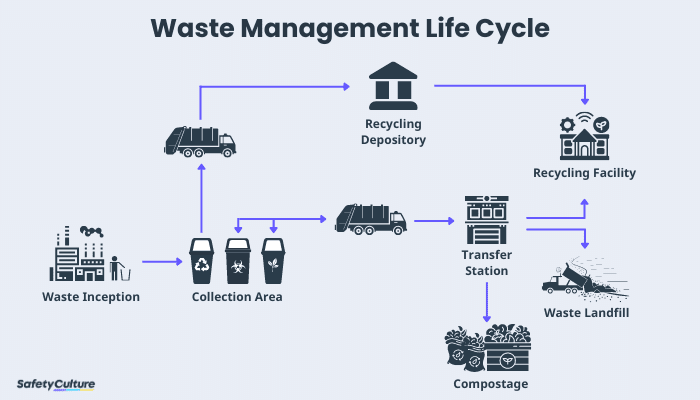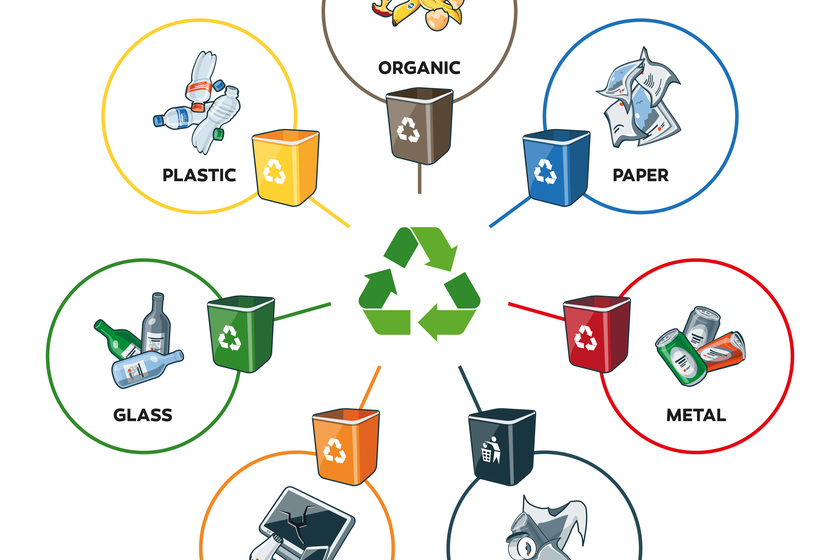Recycling Lives Services: Leading the Way in Responsible Recycling
Recycling Lives Services: Leading the Way in Responsible Recycling
Blog Article
Exploring Various Sorts Of Waste in Modern Waste Management Solution
The modern landscape of waste monitoring entails navigating a complicated selection of waste types, each requiring specialized handling and disposal techniques to reduce ecological impacts. Metropolitan strong waste, contaminated materials, digital waste, and natural waste each existing distinct obstacles and chances for source recuperation. Innovative options such as smart waste bins and waste-to-energy innovations are emerging as important devices in boosting efficiency and sustainability. Recognizing these waste kinds is important for fostering public understanding and encouraging energetic participation in sustainable techniques. What methods can successfully resolve these diverse sorts of waste while advertising a circular economic climate?
Municipal Strong Waste
Metropolitan solid waste, typically referred to as household garbage or trash, includes a variety of thrown out materials produced by property, industrial, and institutional sources within a community. This waste stream typically consists of things such as packaging, food scraps, lawn trimmings, paper, plastics, textiles, and thrown out home products. The monitoring of community strong waste is a vital component of urban planning and public health, requiring efficient collection, transport, and disposal systems.
Effective waste management systems are made to reduce ecological influence while making best use of source recuperation. This often involves a combination of techniques consisting of composting, recycling, and landfilling. Recycling programs target materials like paper, glass, steels, and specific plastics, diverting them from landfills and reestablishing them right into the manufacturing cycle. Composting organic waste, such as food scraps and lawn trimmings, not only decreases land fill usage however likewise generates valuable soil changes.
Municipalities have to additionally resolve the financial and logistical obstacles linked with waste management. Executing pay-as-you-throw systems, boosting public understanding, and purchasing technology can significantly boost waste diversion rates. By incorporating these techniques, communities can promote sustainable neighborhoods, decrease greenhouse gas exhausts, and preserve all-natural resources.
Hazardous Waste

Reliable contaminated materials management includes a number of vital steps: identification, treatment, disposal, and partition. Identification requires the category of waste based on its hazardous residential or commercial properties. Segregation makes certain that dangerous materials are saved individually from non-hazardous waste to avoid cross-contamination. Treatment techniques, such as chemical neutralization, incineration, and stabilization, are used to decrease the toxicity, quantity, or wheelchair of the waste. Ultimately, disposal choices, including safe garbage dumps and underground storage, are picked to make sure long-term containment.
Regulatory structures, such as the Resource Conservation and Recovery Act (RCRA) in the United States, give standards and standards for hazardous waste management. Adherence to these laws, coupled with innovations in waste treatment technologies, is necessary in reducing the threats related to harmful waste.
Electronic Waste
Electronic waste, generally described as e-waste, represents a swiftly expanding difficulty in waste management systems internationally. This kind of waste incorporates thrown out electronic devices and tools such as smart devices, computers, televisions, and various other digital appliances. The fast pace of technical development, paired with lowering product life-spans and customer need for the most recent devices, has exponentially enhanced the volume of e-waste generated yearly.
E-waste is especially problematic as a result of its complicated make-up, commonly having dangerous compounds like lead, cadmium, and mercury, which position significant ecological and health threats if not properly managed. Alternatively, e-waste also consists of important materials such as copper, silver, and gold, which can be recouped and recycled. The dual nature of e-waste-- both dangerous and valuable-- requires customized handling, recycling, and disposal processes.
Efficient e-waste management involves rigorous regulatory structures, robust collection systems, and progressed reusing modern technologies. Public awareness and involvement are vital, as improper disposal techniques, such as unlawful discarding and informal recycling, aggravate ecological contamination and wellness threats. As a result, boosting e-waste management practices is crucial for mitigating ecological influence and recovering important sources in a significantly electronic globe.

Organic Waste
Organic waste, comprising cooking area scraps, yard trimmings, and farming deposits, represents a substantial section of the international waste stream. This sort of waste is naturally degradable, meaning it can be broken down by microorganisms right into less complex organic substances. Despite its potential for all-natural decomposition, improper administration of natural waste can lead to damaging ecological influences, consisting of the emission of greenhouse gases such as methane, which add to climate modification.
Effective monitoring of organic waste is essential for lessening these environmental impacts (recycling lives services). Composting is a widely embraced method, changing organic waste into nutrient-rich compost that can improve soil health and wellness and agricultural productivity. In addition, anaerobic digestion is an arising technology that transforms organic waste into biogas, an eco-friendly power source, and digestate, which can be made use of as plant food
Municipalities and waste monitoring view publisher site entities must carry out durable natural waste collection and therapy programs to make best use of the advantages of these procedures. Public education and learning campaigns can also play an essential function in encouraging households and services to different natural waste from various other sorts of waste. By focusing on the monitoring of organic waste, societies can minimize landfill usage, reduced greenhouse gas emissions, and produce important byproducts for farming usage.

Cutting-edge Waste Management
In the world of waste administration, cutting-edge techniques are transforming just how cultures manage their refuse, intending for sustainability and effectiveness. One noticeable technology is the application of wise waste containers outfitted with sensors that monitor fill levels and maximize collection routes.
An additional significant advancement is the adoption of waste-to-energy (WtE) innovations. By converting non-recyclable waste into useful power through processes such as incineration and anaerobic food digestion, WtE reduces land fill worry and provides a renewable resource source. Developments in chemical recycling enable for the failure of complex plastics into their initial monomers, allowing the development of new, top notch plastic products.
Moreover, the circular economic situation design is gaining traction, highlighting the design of items and systems that prioritize reusability and source effectiveness. This alternative approach motivates markets to reduce waste generation from the start. With these ingenious techniques, modern-day waste administration systems are not only resolving the instant obstacles of garbage disposal however additionally leading the way for an extra sustainable future.
Verdict
An extensive understanding of community solid waste, hazardous waste, electronic waste, and natural waste, combined with the application look at this site of innovative waste administration solutions, is vital for mitigating environmental influences. Integrating innovations such as wise waste bins and waste-to-energy systems can enhance performance and sustainability. Efficient waste administration Find Out More techniques not only foster resource healing however additionally promote public recognition and participation, inevitably contributing to the advancement of a round economy.
The modern landscape of waste monitoring includes browsing a complex range of waste kinds, each calling for specialized handling and disposal approaches to reduce ecological effects. Metropolitan solid waste, unsafe waste, digital waste, and natural waste each present distinctive difficulties and opportunities for resource healing.Digital waste, generally referred to as e-waste, represents a rapidly growing challenge in waste monitoring systems globally. Through these innovative techniques, modern-day waste monitoring systems are not only attending to the immediate difficulties of waste disposal but also paving the way for a much more lasting future.
A thorough understanding of municipal solid waste, harmful waste, digital waste, and organic waste, paired with the execution of cutting-edge waste management remedies, is essential for alleviating ecological influences. (recycling lives services)
Report this page